Read also CART RUTS CUT FROM QUARRIES
In the presence of slopes, even slight ones, in some
cart ruts in the Targia district, in Syracuse, central holes are found with a diameter of between 30 and 50 centimeters and a depth of 15-20 centimeters, spaced about 50 centimeters apart. Neither the position (they are not exactly in the center of the
cart ruts and perfectly aligned with each other), nor the shape appear perfectly regular: either the passage of time and any wear have profoundly modified their original shape or, simply, they have never had a systematic regularity. However, the offset in position between one hole and another is never completely “off-axis”: there is always a portion about twenty centimeters wide that coincides with the same portion of the previous and subsequent hole. The best preserved and most defined holes are found in the
cart ruts usually called
Scala Greca, near the structure that academically should have been the
Porta Scea north of Syracuse.
These holes would have been dug to
to allow oxen and horses to go up and down without slipping. I also read, in the most famous encyclopedia on the web, that these holes would be precisely the
horse hoof prints engraved in the rock...
I honestly don't know from which source, whoever wrote the relevant page of the famous encyclopedia, got the information on the prints, but the indication on the holes dug specifically to allow the animals to pass on a slope, comes from the studies that Paolo Orsi conducted at the end of the 19th century, also specifying that this
carriageway was intended for one-way traffic, that is, that it was plausibly
passable only uphill, probably due to the considerable percentage of slope that the path acquires when it begins to curve. The well-known scholar, who did so much good for Sicilian archaeology, certainly did not have access to a tool like the Internet at the end of the 19th century, through which he could make appropriate comparisons with similar
carraie (the existence of which he probably did not know) located thousands of kilometers away.
The only ancient civilization in Sicily capable of generating
carraie, for Orsi, could realistically only be the Greek one. However, if he had had access to the information that we can use today through in-depth research online, would he have remained of this opinion? It is no coincidence that Orsi himself seemed to have intuited that there was
something that did not add up about the origin of these
carraie, since their structure was in stark contrast with the typical Greek way of building roads.

In fact there are
cart ruts extremely similar to the Syracusan one, therefore with an evident row of central holes, obviously in
Malta, in
Azerbaijan, in
Turkey and even in
Arizona. I would consider it superfluous to point out that the ancient Greeks never colonized Azerbaijan or Arizona, that in Cappadocia the Greek influence was rather feeble, since the
conditio sine qua non for the foundation of a
polis was the proximity of the sea, and that Malta, although under Greek influence for a couple of centuries, never hosted Greek settlements comparable in size and magnificence to the
poleis of Sicily and Magna Graecia.
Although Paolo Orsi was more than justified, I wonder how one can today sustain with indisputable certainty the Greek origin of such
amaxitoi odoi…
Returning to the holes of the
cart ruts, in some, in Azerbaijan, they are so worn that they tend to form a single central depression. This phenomenon is also found in some sections of the Syracusan
cart ruts. Some
cart ruts, in particular,
Spanish and French instead present a single depression: and if originally, the latter, had a system of holes similar to the Syracusan one, then transformed by wear into a single depression, as suggested by the state of the
cart ruts in Azerbaijan?
Totally rejecting, for obvious non-correspondence, the theory of indirect creation through trampling of the rock by animals, these holes certainly have an artificial origin: they were dug for a purpose. Frankly, I find it questionable that they could have served to facilitate the transit of pack animals (especially if arranged in parallel pairs, a custom that can be seen from the numismatic and artistic heritage of the Greek and Roman world) and, in any case, if they really had this purpose, why create them also in the sections where, due to the slight slope, they would not only have been superfluous, but even an obstacle? In other words, if not necessary, why dig ditches on the path that pack animals would have had to travel?
In a section of the
carriageway “Scala Greca” the grooves themselves seem to be a succession of small basins. Vertical channels, barely visible, can be seen along the edges, in correspondence with those holes, an indication of a slight flow of water towards the grooves. If they had been created by the simple slow, occasional flow of condensation accumulated on the upper part of the edge of the carriageway, how long would it have taken to create those holes? Furthermore, if this phenomenon also affected the central system of holes, how much would it have affected the modification of its original structure?
 So what could those holes have been used for?
So what could those holes have been used for?
I am of the opinion that historians and archaeologists should submit their hypotheses regarding the function that similar structures could have had, to the scrutiny of engineers or, in any case, professionals with technical skills. The "limit" of the historian or archaeologist in this regard is precisely relating, for example, such a system of holes only to the historical framework to which one prejudicially refers, ending up choosing the solution from a range of academically tolerable possibilities. The engineer, on the other hand, proceeds in the opposite way, that is, first seeking the most intuitive and plausible solution, then verifying its historical plausibility.
Since my university education is also essentially humanistic, I have submitted the photos accompanying this "work" to the scrutiny of engineer friends.
For intellectual honesty, it must be recognized that the hypotheses and reflections that have arisen are inevitably tainted by the prejudice of seeing
cart ruts,
sic et simpliciter, as roads. They could have had a completely different function (as hypothesized, for example, by Sagona in 2004). However, in the meantime it was decided to take them into consideration as
carraie.
First hypothesis: braking system
This system of holes could have been used to systematically prop up the vehicle as it traveled uphill sections: by lowering a pin into the hole below, like an archaic handbrake, the vehicle would have gained the distance traveled, allowing the driving force (realistically human or animal) to "recharge its energy" before proceeding with further effort to travel another portion of the route, gradually repositioning the pin in the holes reached.
However, the presence of holes also in sections where the percentage of slope is negligible cannot be explained: here, why not opt for less laborious and cheaper wedges?
Nor can the absence of holes be explained in sections of other
cart ruts in the area, with a slope comparable to the portion of the
cart rut "Scala Greca" where the holes begin to appear. Furthermore, in the non-Sicilian
cart ruts mentioned above, where there is a very similar system of holes, there does not seem to be a high percentage of slope.
 Second hypothesis: slope lifting
Second hypothesis: slope lifting.
Considering this system as a sort of
rack, it could have been functional to the movement of a hypothetical vehicle via a toothed wheel, powered by animal or human force applied to a system of pulleys, built with no more and no less than the same technological knowledge involved in the construction of Greek construction machines.
Unfortunately, in the work in which one would have expected to find confirmation of it, given the meticulousness with which even the most particular Greek machines were described, namely in Vitruvius'
De Architectura, there is not even a brief mention of a vehicle equipped with a similar "motor" system.
From the analysis of the measurements, the arrangement and the average distance of the centre of the holes, such a vehicle should have had a structure not dissimilar to the chariot described in
The problem of cart ruts in south-eastern Sicily, with at the center however a cogwheel plausibly with a diameter of 184 centimeters, with 8 teeth spaced 70 centimeters apart (from center to center), measuring 20 centimeters per side.
The problem is that a
cart ruts like
Scala Greca, in which the holes are so well preserved (apart from some slightly more ruined sections) represents almost a unicum in the area. In the Targia district, there are other
cart ruts in which this system of holes is identifiable but, given the wear, only thanks to the comparison with
Scala Greca, otherwise they could also have been interpreted as simple basins caused by the weather over the millennia. The impression is that it is an almost isolated system of movement: would a vehicle have been built ad hoc just to travel a few hundred meters of the route?
Furthermore, there are no holes either at the base of the
cart ruts “Scala Greca”, of which unfortunately only a few meters remain, nor at the top, where the holes are replaced with transverse lines spaced, coincidentally, 70 centimeters apart. Even at the top, unfortunately, the
cart ruts slopes away into the ground.
However, an incontrovertible fact is that, at least as far as the
Scala Greca is concerned, the system of holes is exclusively present on a slope, even if slight.
One could therefore hypothesize a mobile gear that goes up and down when necessary, in relation to the presence of the holes.
In any case, why is there no such system of central holes in some
cart ruts with the same slope? If they were all contemporary, therefore all referring to a period that realistically goes from the 8th to the 5th century BC (which would plausibly end with the construction of the Dionysian walls of Syracuse), why are some extremely ruined and others not? Why are the
cart ruts of the Cugni or Vendicari Reserve much more ruined than the
cart ruts of the Targia or Granatari Vecchi districts, if they are substantially comparable environments?
Perhaps because, if we broaden our gaze to the rest of the world, we understand that they cannot all be of Greek origin, all created or constructed in the same way and, above all, all more or less contemporary. It is clear that mine is only the working hypothesis of an amateur, resulting from simple observations in the field, free from too many prejudices.
However, is the aim of the scientific approach to try to understand phenomena or to force them into convenient, reassuring, socially and academically acceptable explanations?






 DO YOU WANT TO ORGANIZE AN ERASMUS AT AGRICAMPING SOPHIA?
DO YOU WANT TO ORGANIZE AN ERASMUS AT AGRICAMPING SOPHIA?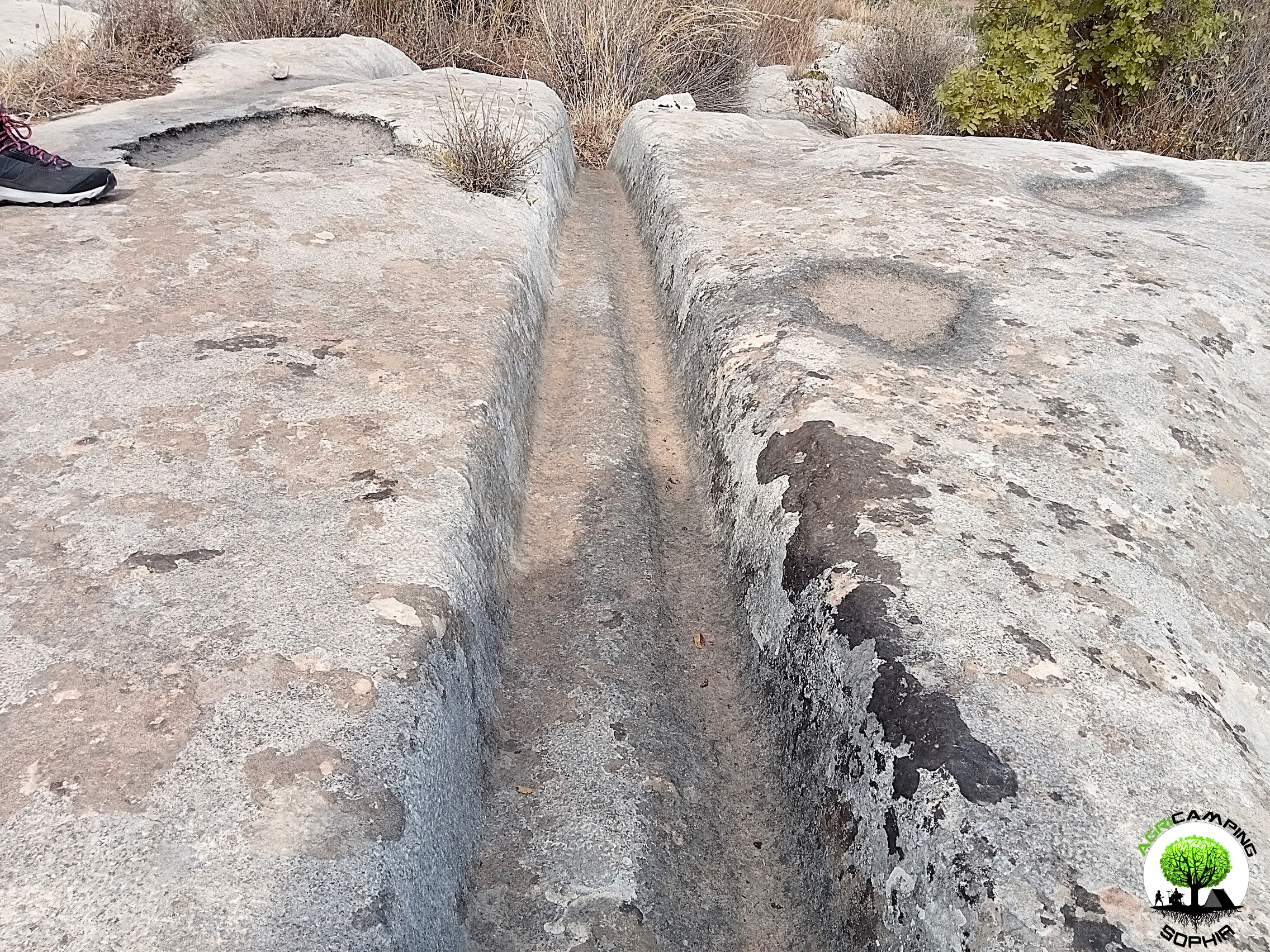 CART RUTS MODELED ON SOFT ROCK?
CART RUTS MODELED ON SOFT ROCK? CART RUTS CUT FROM QUARRIES
CART RUTS CUT FROM QUARRIES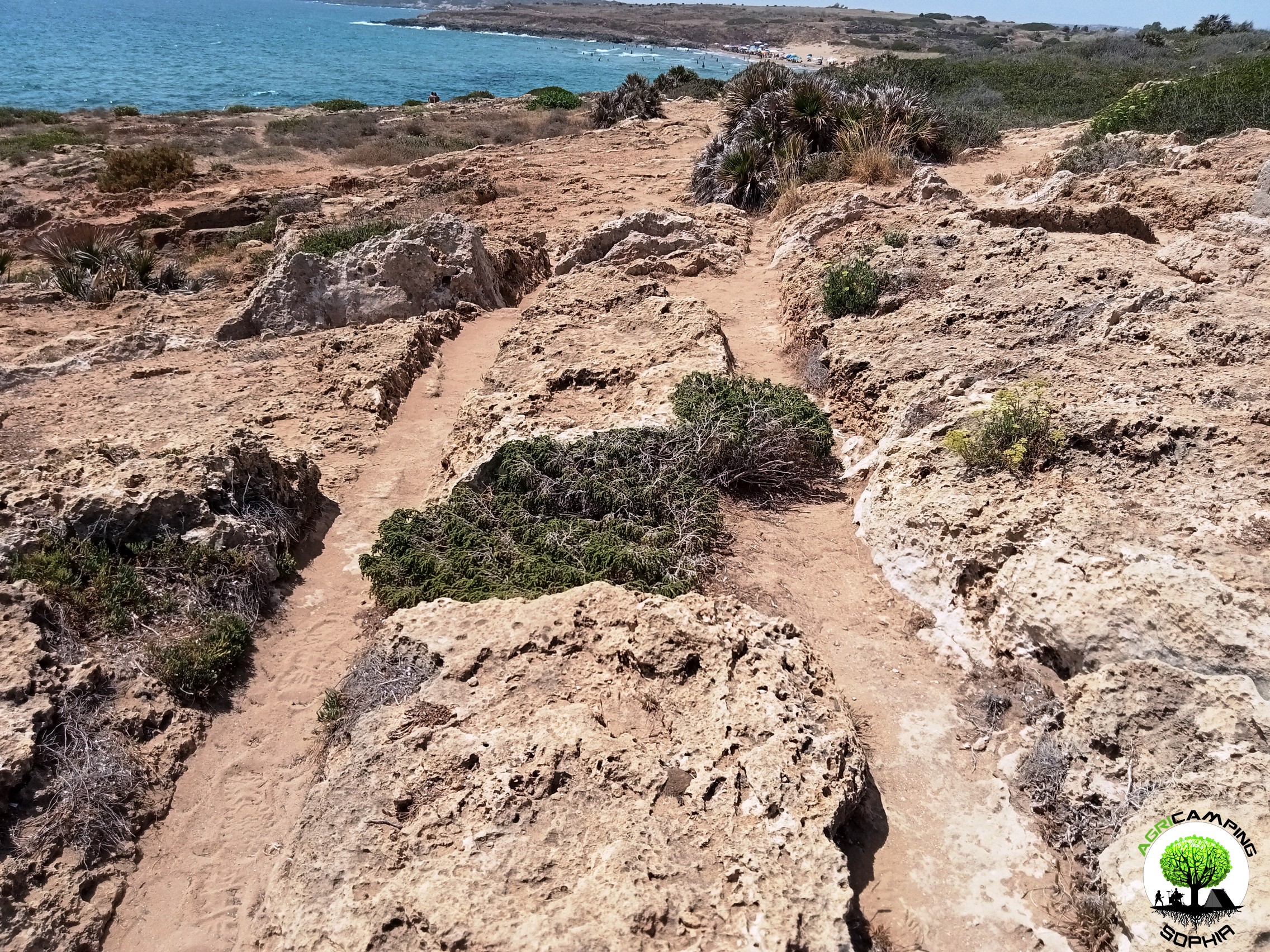 CART RUTS AND A FEW TOO MANY PROJECTIONS
CART RUTS AND A FEW TOO MANY PROJECTIONS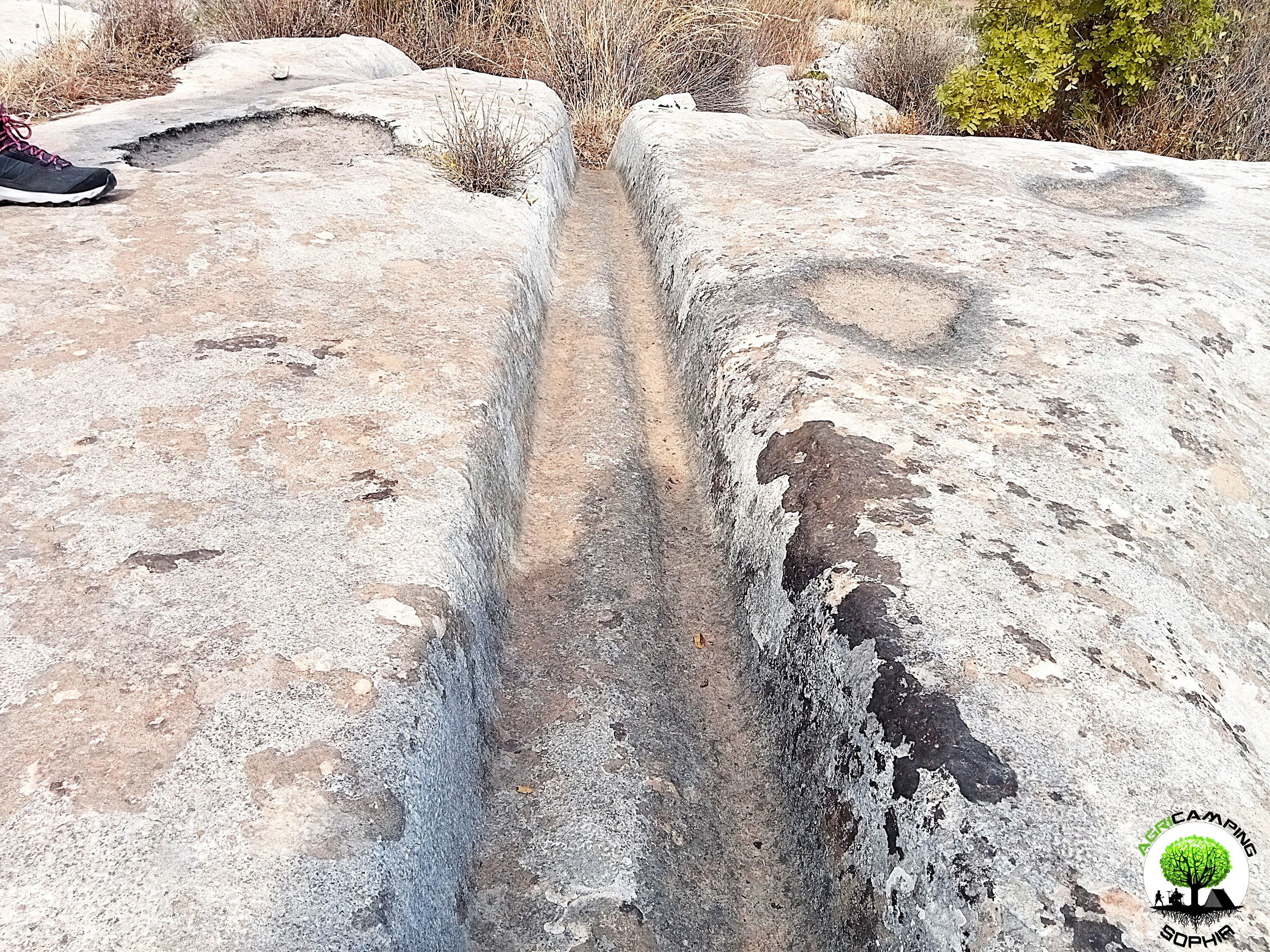 THE POLISHING OF THE CART RUTS
THE POLISHING OF THE CART RUTS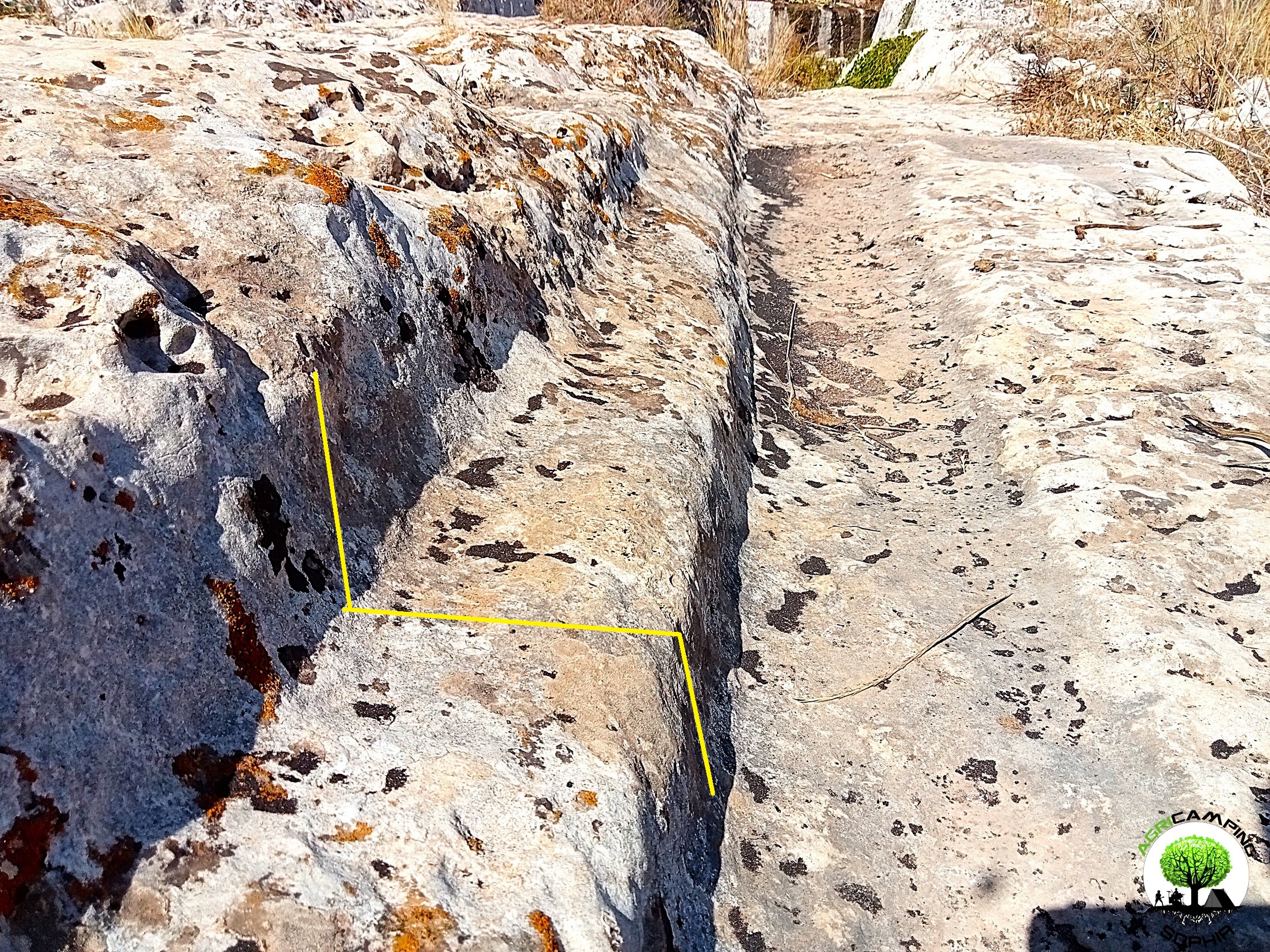 THE PROBLEMATIC EDGES OF THE CART RUTS
THE PROBLEMATIC EDGES OF THE CART RUTS THE PROBLEM OF CART RUTS IN SOUTH-EASTERN SICILY (PART FOUR)
THE PROBLEM OF CART RUTS IN SOUTH-EASTERN SICILY (PART FOUR)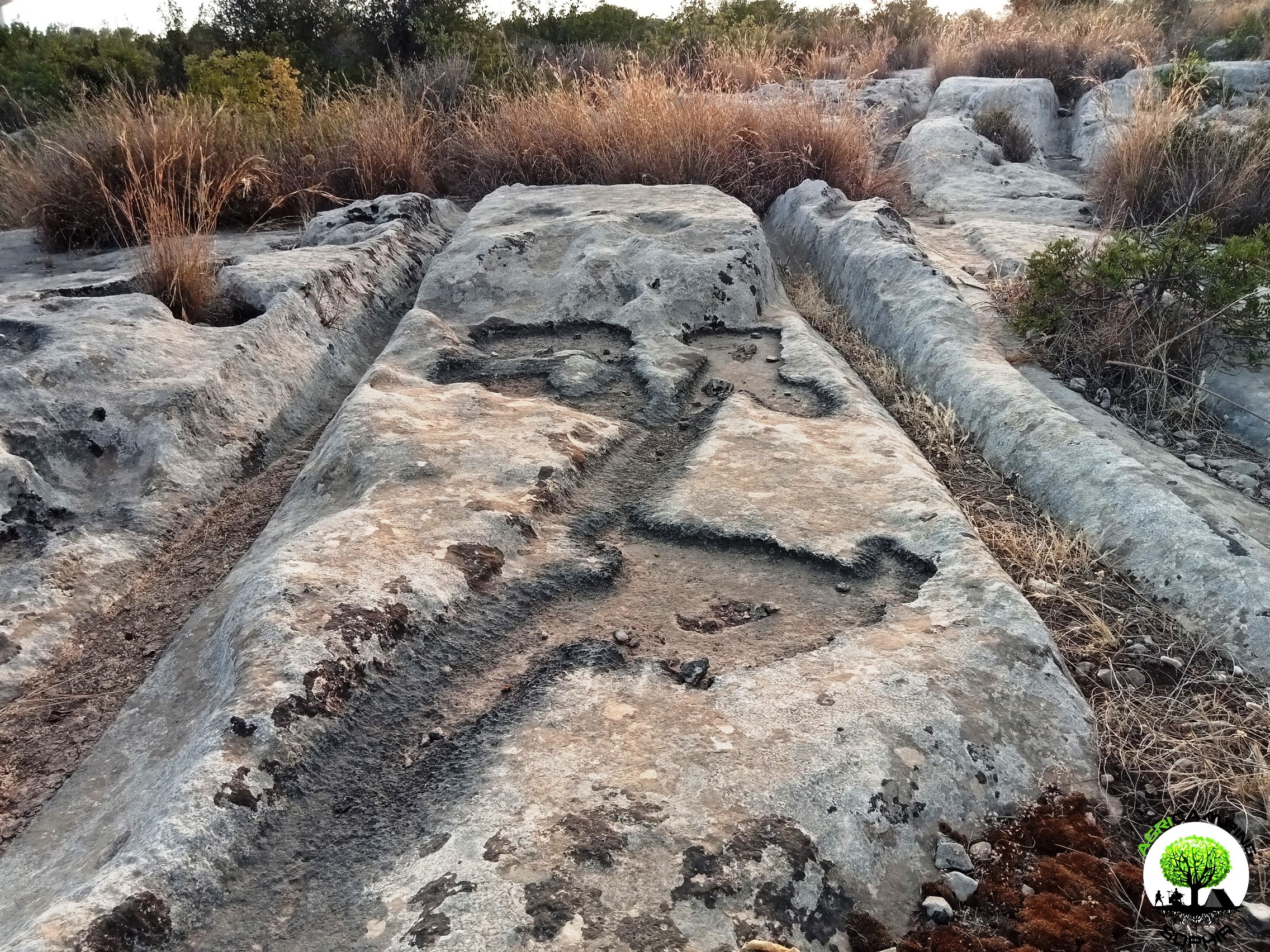 THE PROBLEM OF CART RUTS IN SOUTH-EASTERN SICILY (PART THREE)
THE PROBLEM OF CART RUTS IN SOUTH-EASTERN SICILY (PART THREE)